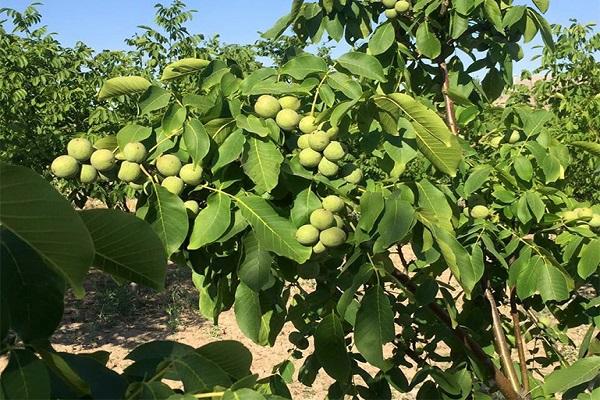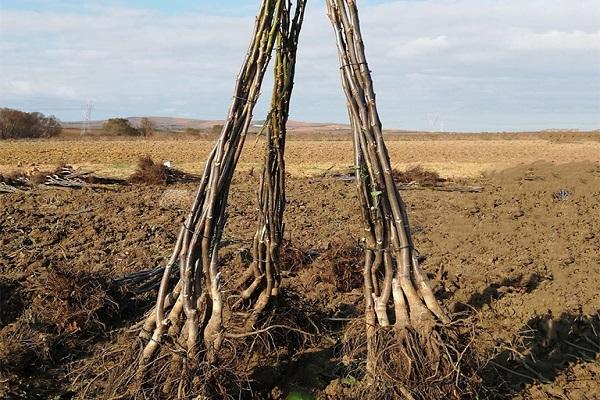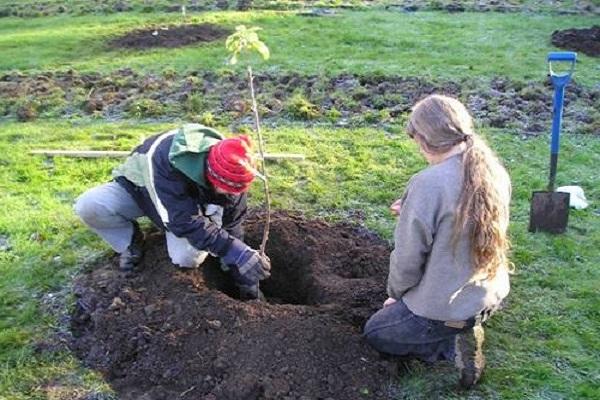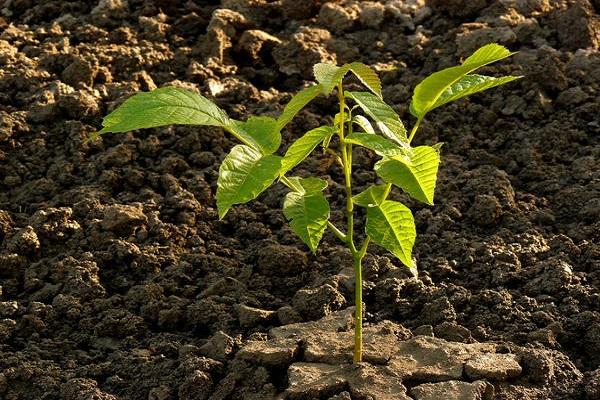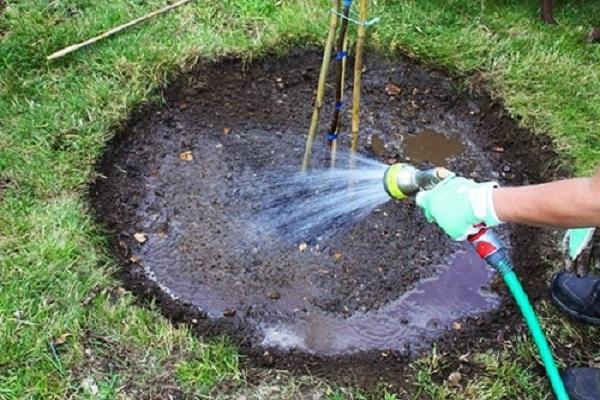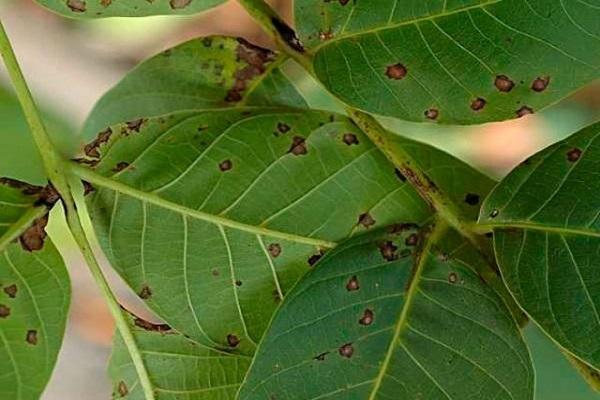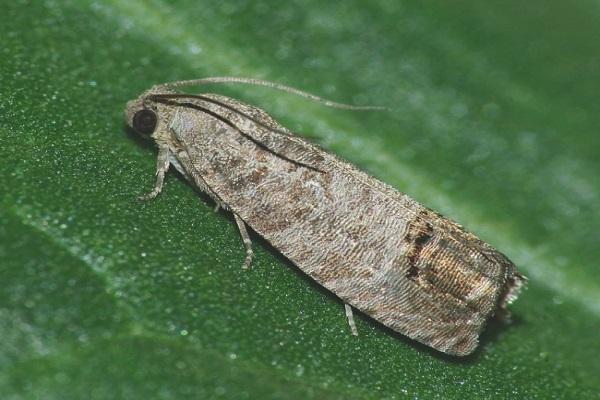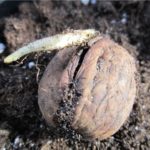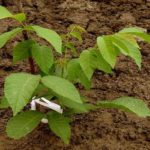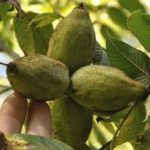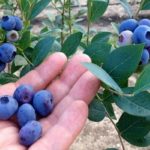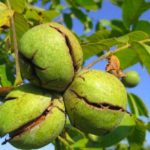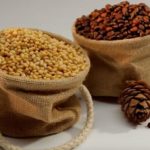It is rare that a gardener does not grow walnuts on his plot. It has tasty fruits that contain a large amount of useful substances. In addition to the kernels, leaves, partitions, and shells are used in folk medicine. There are many varieties of this crop, one of the most famous is the American Chandler nut. Further information about the characteristics of cultivation, diseases and pests, crop care, as well as the collection and storage of fruits.
- Description and characteristics of Chandler walnut
- Main positive and negative aspects
- Features of growing a plant
- When and where to plant?
- Preparation of planting material
- Landing specifics
- Further tree care
- Watering and fertilizing
- Trimming and shaping
- Whitewash
- Preparing for winter
- Diseases and pests of crops
- Collection and storage of nuts
Description and characteristics of Chandler walnut
The variety was bred in California and named after fruit scientist William Chandler. The nut has become widespread due to its high yield. It begins to bear fruit in the fourth year after planting. The variety is distinguished by its large fruit size with a thin shell that easily splits into 2 parts.
Chandler reaches a height of 7 meters. The average fruit weight is 17 grams. A gardener can collect about 35 kilograms of nuts from one young tree, and 70-90 kilograms from an older tree. Chandler belongs to the lateral varieties, that is, the fruits are formed not only on the tops of adult shoots, but also on young branches.
Main positive and negative aspects
The advantages of the nut include the following qualities:
- begins to bear fruit early;
- high-yielding variety;
- the kernel is easily removed from the shell;
- drought resistance;
- good keeping quality and transportability;
- has high immunity.
The disadvantages include the spreading nature of the walnut crown, which is not very acceptable for small garden plots.
Features of growing a plant
Since Chandler takes up a lot of space, the distance between it and other plantings should be quite large. In order not to be disappointed with the result, it is very important to choose high-quality planting material.
When and where to plant?
It is preferable to plant nuts in the spring; only in the southern regions the procedure can be carried out in the fall. When planting in spring, the pit is prepared six months in advance; when planting in autumn, it takes 2-3 weeks. Heavy clay soil is loosened with peat and compost.
Walnut is a light-loving crop, so a sunny place is selected for it. A tree growing alone in full sun will bear fruit best.In the area where the nut grows, groundwater should not come close to the soil surface.
Preparation of planting material
The productivity of the Chandler nut largely depends on the choice of quality seedlings. It is better to purchase it from trusted sellers or a well-established nursery. The crop first develops a root system, and only then does the green mass develop. Therefore, if an overgrown nut with a small root is sold, it is unlikely that it will grow into a tree that produces a bountiful harvest.
Before planting, the plant is inspected, broken, dry roots are removed. After which the root system is lowered into a clay mash. It is prepared from clay, rotted manure and water. The consistency should be like thick sour cream.
Landing specifics
Having chosen a place for planting, it is cleared, then a planting hole is prepared. On fertile soil its depth and diameter can be 60 centimeters, on less fertile soil - at least 1 meter. Only the top layer of removed soil, approximately 30 centimeters deep, is used. The rest of the earth is thrown back and is not put back into the hole.
Then the ditch is filled with a substrate of the following composition:
- upper removed layer of soil;
- rotted manure;
- peat;
- potassium-phosphorus fertilizers.
The roots of the seedling are carefully straightened to the sides. The substrate is poured, which is then lightly compacted, and the tree trunk circle is shed generously.
The young tree is planted in a prepared hole so that the root collar is at a height of 5 centimeters above the ground.
To retain moisture, the root circle is mulched with straw, sawdust or peat. To prevent the fragile seedling from breaking under the pressure of the wind, the trunk is tied to a peg. They drive it in at a distance of 10 centimeters from the nut.
Important! When planting a nut, the root collar should be 5 centimeters above the ground surface..
Further tree care
A young tree needs constant care. It needs to be watered, loosen the soil, and remove weeds. The grown plantings are fed, whitened, and a crown is formed.
Watering and fertilizing
After planting, the Chandler nut is watered every day for a week, then it is enough to moisten the soil around the tree once every 7 days. When rainfall occurs, watering is adjusted. The plant is irrigated only at the root in the evening. When the nut reaches the age of 4-5 years, it will develop a powerful root and will no longer need additional watering.
If fertilizers have been added to the soil, then fertilizing will be required only in the 4th year after planting the young tree. In the spring, mainly nitrogen is added to increase green mass, then complexes containing phosphorus, potassium, and microelements. Fertilizers must be used according to the instructions so as not to burn the root system with the aggressive composition.
Trimming and shaping
In early spring, sanitary pruning is carried out. At the same time, diseased Chandler shoots broken under the pressure of the wind are removed. To trim trunks, pruners, a hacksaw, and a garden knife are used. The procedure is completed by sealing the cuts with garden pitch.
In addition, formative pruning is carried out. It is necessary to prevent the formation of too long shoots with small branches. Formative pruning is also needed to improve the quality and quantity of fruits due to thinning of the tree crown.
Whitewash
When the air temperature drops to +3+4°C in autumn, the nuts are whitened with slaked lime.The procedure is needed to protect the trunks from harmful insects and pathogenic microorganisms located in the folds of the bark. In addition, whitewashing will protect the tree from bright sunlight at the end of winter and early spring.
Preparing for winter
Chandler is a frost-resistant variety, and an adult plant does not require shelter for the winter. Young trees need to be wrapped in burlap. In addition, before the onset of stable frosts, the tree trunk circle of the nut is mulched with rotted manure. The mulch should be located at least 10 centimeters from the trunk.
Diseases and pests of crops
Nuts are affected by diseases and pests much less than fruit crops. This mainly happens due to improper care. Failure to follow agricultural practices leads to the following diseases:
- bacteriosis;
- brown spot;
- root cancer;
- bacterial burn.
Diseases can be caused by excessive fertilization with nitrogen, too much watering, or deepening of the root collar during planting. For prevention in the spring, the nut should be sprayed with copper-containing preparations. Infected parts are removed from the plant and burned.
Pests that can affect Chandler are:
- American white butterfly;
- mite;
- codling moth;
- nut moth;
- aphid.
Harmful insects are sprayed with insecticides and acaricides. It must be remembered that the procedure cannot be carried out during the flowering period of the nut. Removing weeds around the tree will help prevent the appearance of some diseases and pests, since they can be a carrier of misfortunes.
Collection and storage of nuts
Fruit ripening occurs unevenly, so harvesting is done in several stages. Nuts growing on the lower branches can be collected by hand.If there are a lot of walnut trees on the site, you can use a special tool - a roll.
Many fruits fall off on their own after a strong wind. If it rained and the fruits became dirty, they must be washed before storing. In most cases, the skin itself separates when it falls from the fruit. If it is still hanging on, remove it as quickly as possible, otherwise the core may darken or even turn black.
In order for nuts to be stored for a long time and not lose their taste and nutrients, they need to be properly prepared. They are dried in the open air or in a well-ventilated room. The nuts are laid out in one layer, and be sure to mix periodically. In addition, the fruits can be dried in the oven at a temperature of no more than 50°.
Nuts should be stored in a dry place, in wooden boxes, canvas bags or nets. There should be no products with a strong aroma nearby, since the kernels absorb foreign odors. Peeled fruits can be stored in the refrigerator and even frozen by placing them in vacuum bags.

